Moving ‘uptown’ from five floors to a single open studio, Denton Corker Marshall has eschewed the popularist office palette of soft pastels and soothing timbers. “It’s a fairly stripped back fit-out, but it’s honest and conveys the way we work, as much as how we design,” says DCM’s founding director and architect, Barrie Marshall.
December 16th, 2019
Denton Corker Marshall (DCM) is well-known on the Melbourne and international architecture scene. Melbourne’s ‘gateway’ (sometimes referred to as the ‘sticks’), the Exhibition Centre, and the Melbourne Museum – all designed by DCM – are now ingrained in the city’s landscape. However, producing these great projects requires the right creative workspace and after decades of operating from five levels in Exhibition Street, it was time to move. “John (Denton) and I were happy enough with the multi-level arrangement, but the younger directors and the broader staff (85 in Melbourne) were keen to be in a more studio-style environment, on one level,” says architect Barrie Marshall, founding director of DCM.
DCM found a suitable workspace at the ‘top of the city’, just a stone’s throw from its previous location, at 55 Collins Street. Located on the 19th level of one of the two towers designed by I.M. Pei in the 1980s, it was undergoing a refurbishment when the 1000 square metres of floor area were first inspected. “The tradesmen were just about to lay carpet and ceiling tiles until we asked them to halt this process,” says Marshall, who was keen, as were his colleagues, to create a robust and industrial aesthetic.
Instead of ceiling tiles, the pipes and airconditioning ducts were left exposed. The concrete floor has also been left, complete with all the ‘blemishes’ time produces. And in a style that has been a consistent part of DCM since the early 1970s when the practice was established, finishes are raw, simple, and meticulously executed. Perforated steel wall panels appear on virtually every wall, with many of DCM’s furniture designs, such as the ‘Adelphi’ chair (named after the notable Adelphi hotel in Flinders Lane) appearing in many of the breakout spaces and meeting rooms.
However, the pièce de résistance is a fluid metal ‘cloth’, formed as a bench at reception, a one-off that is immovable. “I wanted something that looked as though it grew out of the ground, as in the landscape,” says Marshall, whose hand sketches of DCM’s pavilion at the Venice Biennale four years ago also feature upon arrival.
Although DCM’s new office is located in a corporate tower, the last thing in mind was producing a corporate-style environment – think an ‘interior designer’ rather than architecture aesthetic. “We haven’t changed our approach since we started, except for the short time that we experimented with the Memphis scene in the early 1980s, as did many other architects,” says Marshall, who still appreciates some of the iconic designs from this period, including two highly desirable Torso armchairs by Paolo Deganello in 1982, now taking pride of place outside the firm’s library.
Unlike the previous DCM fit-out with a singular view to a laneway, the new office is centred around the lift core, and enjoys floor-to-ceiling windows on all sides, offering views of Port Phillip Bay in the distance and people scurrying below along the city pavements. “Even though we’re on the 19th floor, you can identify people you know walking below,” says Marshall.
Conceived in a non-hierarchical manner, the staff, including the directors, share the open-plan workspaces, breaking off into individual teams when required. Small breakout areas, also framed in perforated steel, allow for more intimate gatherings, while large trestle-style tables in the kitchen morph between work and lunch.
“It’s a fairly stripped back fit-out, but it’s honest and conveys the way we work, as much as how we design,” says Marshall, who is one of the few architects remaining who still works from a drawing board, rather than sitting behind a computer. “John and I sit in one corner (the south-east corner) and we like to make things with our hands,” says Marshall, pointing out the plasticine models of the ‘blob’ that now features in reception.
This article originally appeared in issue #78 of Indesign magazine – the ‘Customer Experience’ issue. See what was specified here. And for all the latest design insights, join our weekly newsletter.
INDESIGN is on instagram
Follow @indesignlive
A searchable and comprehensive guide for specifying leading products and their suppliers
Keep up to date with the latest and greatest from our industry BFF's!

Welcomed to the Australian design scene in 2024, Kokuyo is set to redefine collaboration, bringing its unique blend of colour and function to individuals and corporations, designed to be used Any Way!

London-based design duo Raw Edges have joined forces with Established & Sons and Tongue & Groove to introduce Wall to Wall – a hand-stained, “living collection” that transforms parquet flooring into a canvas of colour, pattern, and possibility.

For Aidan Mawhinney, the secret ingredient to Living Edge’s success “comes down to people, product and place.” As the brand celebrates a significant 25-year milestone, it’s that commitment to authentic, sustainable design – and the people behind it all – that continues to anchor its legacy.
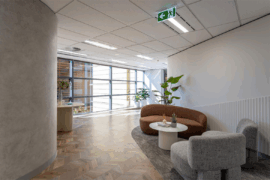
A thoughtful, low-waste redesign by PMG Group in collaboration with Goodman has transformed a dated office into a calm, contemporary workspace featuring a coastal-inspired palette and Milliken flooring for a refined finish.
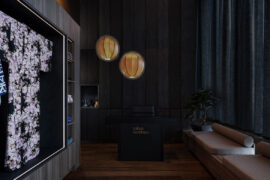
Making a splash on the hair spa scene, the latest project from X + O makes a little slice of Japan right at home in suburban Melbourne.
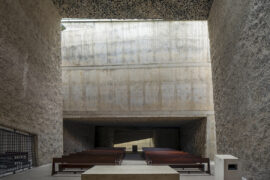
The World Architecture Festival has named The Holy Redeemer Church and Community Centre of Las Chumberas in La Laguna, Spain as World Building of the Year 2025, alongside major winners in interiors, future projects and landscape.
The internet never sleeps! Here's the stuff you might have missed
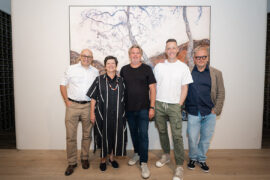
Eco Outdoor recently brought together developers, sustainability experts and local architects such as Adam Haddow to discuss design fundamentals, carbon targets and long-term thinking.
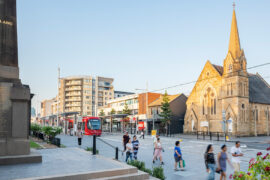
Australia’s first planted light rail corridor sets new benchmark for transport-led urban transformation.